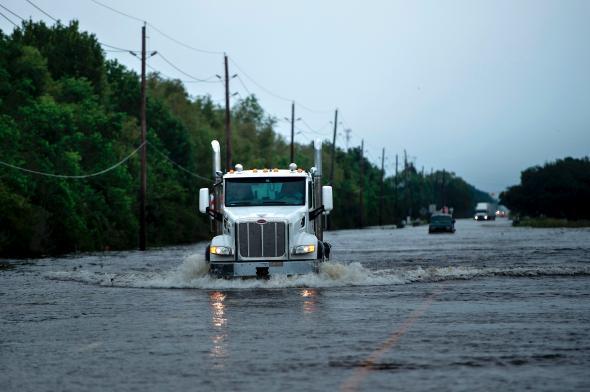Adding another menacing layer to the ongoing danger wrought by Hurricane Harvey, an industrial chemical manufacturer on the outskirts of Houston warned that due to 6 feet of flooding, the company’s plant could explode and there’s “no way to prevent” it. The Arkema plant, located in Crosby, Texas, lost its primary power and two back-up power sources, according to company CEO Rich Rowe, which disabled the facility’s cooling systems, leaving the plant—which manufactures the highly combustible chemical components for products like acrylic-based paint, fiberglass, and other agricultural products—increasingly susceptible to fire and a potentially large explosion.
The Arkema facility was evacuated Tuesday night and local authorities are working to evacuate residents within a mile and half of the plant. The chemicals themselves have already warmed to the point where the company says their volatility means it is no longer safe to try to move them. NPR reports, according to an EPA estimate, 4,000 people live within a 3-miles radius of the Arkema structure, which is 25 miles northeast of Houston. It’s not immediately clear how many people live within a mile and half of the plant.
Here’s more from the Wall Street Journal on what the danger is at the plant:
Mr. Rowe said local officials told him the water level in the area could actually continue to rise over the course of the next three to six days, and as such Arkema, which is based in France, believes the chemicals will start to degrade well before that happens. “And once the chemicals begin to degrade we would be in a situation where we could be looking at a fire and/or an explosion,” he said. As soon as the chemicals begin to degrade they start to “self-accelerate” in a type of no-turning-back mode, he added. Mr. Rowe didn’t get specific about the amount of chemicals on site or just how big the blast might be, except to say that the analysis of the quantity of chemical is what led authorities to decide on the 1.5-mile evacuation zone they deemed appropriate.
